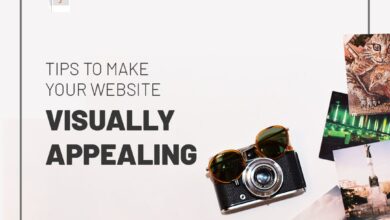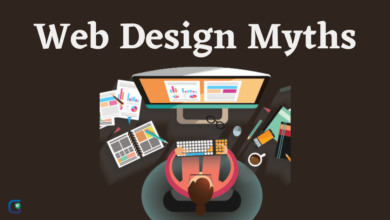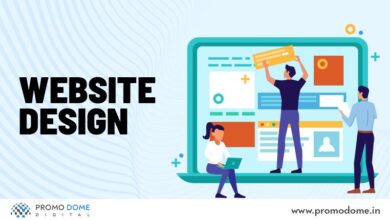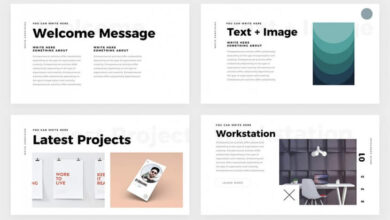
Examining the Trend of Flat Design
Examining the trend of flat design, we’ll journey through its captivating evolution from skeuomorphic roots to its current minimalist reign. This isn’t just about pretty pictures; we’ll delve into the historical context, the underlying aesthetic principles, and the impact on user experience across various applications. Get ready to explore the design choices that shaped the digital landscape as we know it!
From the early days of mimicking real-world objects to the clean lines and bold colors of today, flat design has undergone a fascinating transformation. We’ll unpack the key moments, influential designers, and technological breakthroughs that propelled this minimalist aesthetic to the forefront. Prepare to be amazed by the clever use of whitespace, typography, and color palettes that make flat design so effective.
Historical Context of Flat Design
Flat design, with its minimalist aesthetic and emphasis on functionality, didn’t emerge overnight. It’s the culmination of a design evolution, a reaction against the preceding trend of skeuomorphism, and a product of significant technological advancements. Understanding its history reveals the powerful forces that shaped its rise and enduring appeal.
The shift from skeuomorphism to flat design represents a significant paradigm shift in the world of user interface (UI) and graphic design. Skeuomorphism, prevalent in the early days of digital interfaces, involved mimicking the appearance of real-world objects. Think of the iconic trash can icon looking like a real-world wastebasket, or a notepad app mimicking the texture of paper. This approach aimed to make digital experiences more intuitive and familiar for users unfamiliar with computer interfaces.
However, as technology advanced and users became more digitally literate, this approach started to feel clunky and outdated.
The Transition from Skeuomorphism
The move away from skeuomorphism wasn’t a sudden break but a gradual evolution. As technology improved, designers recognized the limitations of mimicking physical objects in a digital space. The increasing screen resolutions and processing power of devices allowed for cleaner, simpler designs that didn’t require the visual complexity of skeuomorphic elements. This transition paved the way for the rise of minimalism and the focus on functionality over realistic representation.
Key Figures and Moments in Flat Design’s Rise
Several key moments and influential designers contributed to the widespread adoption of flat design. While pinpointing a single “inventor” is impossible, the work of designers like Saul Bass, known for his minimalist movie posters, and the Swiss Style movement with its emphasis on clean typography and grid-based layouts, laid the groundwork. The rise of Apple’s iOS 7 in 2013, spearheaded by Jony Ive, is widely considered a pivotal moment.
This design overhaul, with its stark simplicity and rejection of skeuomorphic elements, significantly popularized flat design and influenced countless other applications and websites.
Technological Advancements Enabling Flat Design
Technological advancements played a crucial role in enabling the widespread adoption of flat design. Higher screen resolutions allowed for sharper, crisper graphics without the need for textures and gradients to compensate for low-resolution limitations. Improved processing power meant that complex, visually rich skeuomorphic designs were no longer necessary to create an engaging user experience. The rise of responsive web design also encouraged the adoption of flat design, as its simplicity translated well across various screen sizes and devices.
Timeline of Flat Design’s Stylistic Shifts
While flat design’s core principles remain consistent, its stylistic nuances have evolved. The initial wave, heavily influenced by iOS 7, was characterized by its extreme minimalism—flat colors, thin lines, and a stark aesthetic. Subsequently, we saw a move towards what some call “flat 2.0” or “material design,” incorporating subtle shadows, depth cues, and more nuanced color palettes to enhance visual hierarchy and improve user experience without sacrificing the core tenets of flat design.
This evolution continues, with ongoing experimentation and refinement of the flat design aesthetic.
Aesthetic Principles of Flat Design: Examining The Trend Of Flat Design

Source: versions.com
Flat design, at its core, is a rejection of skeuomorphism – the design approach that mimics real-world objects. Instead, it embraces minimalism and simplicity, creating clean and uncluttered interfaces that prioritize functionality and user experience. This aesthetic is achieved through a careful consideration of several key principles.
Minimalism and Simplicity
Minimalism and simplicity are fundamental to flat design. The goal is to eliminate unnecessary visual elements, focusing only on the essential information and functionality. This reduces cognitive load on the user, making the interface easier to navigate and understand. Think of a well-designed flat design app icon: it communicates its purpose clearly and concisely, often using a single, well-chosen image or symbol, without superfluous details.
This stark contrast to earlier designs, which often included gradients, drop shadows, and highly realistic textures, showcases the power of intentional reduction. The result is a clean, modern, and efficient design.
Color Palettes and Psychological Impact
Flat design frequently employs limited color palettes, often featuring a small number of carefully selected colors that work together harmoniously. This creates a sense of visual order and consistency. For example, a website might use a primary color for calls to action, a secondary color for accents, and a neutral background color. The psychological impact of color choices is significant.
Blues often convey trust and reliability, greens suggest growth and nature, while oranges and yellows evoke energy and enthusiasm. A well-chosen palette can subtly influence user perception and behavior, guiding their attention and enhancing the overall experience. Consider the use of calming blues in a meditation app or the vibrant oranges used to promote a fast-food restaurant – each choice contributes to the brand identity and user engagement.
Typography and Information Conveyance
Typography plays a crucial role in flat design, serving as a primary means of communicating information. Clean, legible fonts are preferred, often with a focus on readability and hierarchy. Different font weights and sizes are used to distinguish headings, subheadings, and body text, creating a clear visual hierarchy that guides the user’s eye. The careful selection of fonts also contributes to the overall aesthetic, reflecting the brand’s personality and tone.
For example, a playful script font might be used for a children’s app, while a bold sans-serif font might be appropriate for a corporate website. The goal is always clarity and ease of reading.
Whitespace and Negative Space
Whitespace, or negative space, is the empty space around elements in a design. In flat design, whitespace is used strategically to create visual breathing room and improve readability. It helps to separate elements, preventing them from feeling cluttered or overwhelming. The effective use of whitespace can make a design feel more spacious, modern, and sophisticated. Consider a minimalist website with plenty of whitespace surrounding the text and images; this allows the content to breathe and prevents visual fatigue.
This strategic use of empty space is as important as the elements themselves, highlighting the importance of careful planning and layout.
Flat Design in Different Applications
Flat design, with its minimalist aesthetic and focus on functionality, has permeated various design disciplines. Its adaptability allows it to be successfully implemented across diverse platforms and media, each presenting unique challenges and opportunities for designers. This section explores how flat design manifests in web design, mobile apps, branding, print media, and packaging.
Flat Design in Web Design and Mobile App Design, Examining the trend of flat design
Web and mobile app design represent two major application areas for flat design. While both utilize the core principles—clean lines, minimal use of gradients and shadows, and a focus on typography—their implementations differ due to platform constraints and user interaction paradigms. Web design, with its larger screen real estate, often incorporates more detailed illustrations and subtle textures to enhance visual interest without sacrificing the flat design ethos.
Mobile app design, constrained by smaller screens and touch interaction, prioritizes simplicity and clear visual hierarchy. Button sizes and tappable areas need to be significantly larger than their web counterparts to ensure usability. For example, a web-based e-commerce site might use subtle, flat color gradients to highlight product categories, while a mobile app would rely on crisp, distinct icons and clear textual labels.
The core difference lies in the level of detail allowed by the screen size and interaction method.
Flat Design in Branding and Logo Creation
Flat design has significantly impacted branding and logo design. The trend toward simple, memorable logos that translate seamlessly across various media has been largely driven by the adoption of flat design principles. Many contemporary logos employ bold, single-color icons or minimalist typography, often accompanied by a limited color palette. For instance, the logo for Airbnb, a simple, stylized “A”, perfectly embodies this approach.
This simplicity facilitates brand recognition and adaptability across different platforms, from websites and mobile apps to printed materials and merchandise. The effectiveness of flat design in branding stems from its ability to create a clean, modern image that is easily understood and remembered.
Flat Design in Print Media and Packaging
While often associated with digital interfaces, flat design has also made its mark on print media and packaging. The use of bold typography, clean lines, and a limited color palette creates a modern and impactful aesthetic in brochures, posters, and product packaging. However, the absence of simulated depth or texture requires careful consideration of the print medium’s limitations.
To compensate, designers often rely on high-quality paper stock, unique finishes, and clever use of white space to create visual interest. For example, a minimalist packaging design for a skincare product might use a single, bold color block as the background, with the product name and key ingredients clearly displayed in a sans-serif typeface. The overall effect is clean, modern, and premium.
Flat Design in a Fitness Tracker User Interface
Imagine a fitness tracker user interface designed with flat design principles. The main screen would feature a large, easily readable digital clock, showcasing the time and date using a simple, sans-serif font. Below, a circular progress bar, using solid, contrasting colors, would track daily steps, with a clear numerical indicator. Icons representing other metrics, such as heart rate, calories burned, and sleep duration, would be displayed in a clear grid layout.
Examining the trend of flat design, I’ve noticed a fascinating shift in how visual information is presented. The clean aesthetic is undeniably appealing, but its effectiveness depends heavily on strong video content; that’s where understanding how to leverage YouTube becomes crucial. Check out this great guide on getting it on with youtube to see how visual storytelling can enhance even the simplest flat design.
Ultimately, successful flat design requires a strong understanding of how to engage the viewer, and video is a powerful tool in that process.
Each icon would be a single color, simple in design, and instantly recognizable. The color palette would be limited, perhaps using shades of blue and green to evoke a sense of health and well-being. Navigation would be intuitive, using large, clearly defined buttons. The overall effect would be a clean, uncluttered interface that provides the essential information at a glance, prioritizing usability and ease of access.
The Impact of Flat Design on User Experience
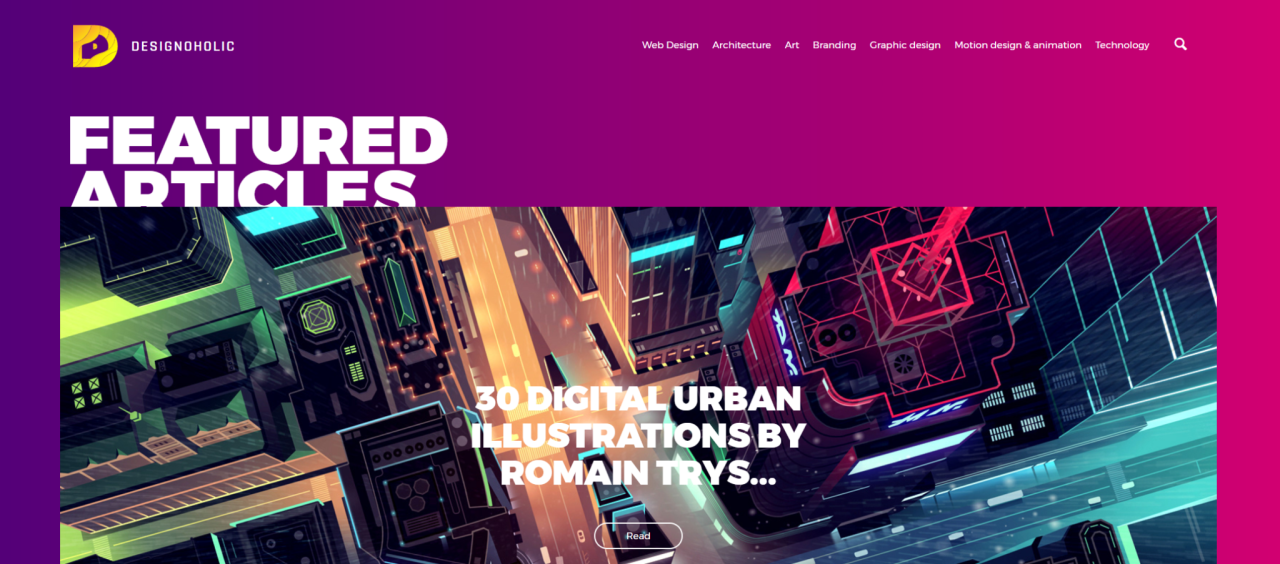
Source: googleapis.com
Flat design, with its minimalist aesthetic, has profoundly impacted user experience (UX), presenting both significant advantages and notable drawbacks. Its simplicity can lead to increased efficiency and accessibility, but it also poses challenges in conveying complex information and establishing clear visual hierarchies. Understanding these dual aspects is crucial for designers aiming to leverage flat design effectively.
Advantages and Disadvantages of Flat Design Regarding Usability and Accessibility
The clean lines and uncluttered appearance of flat design contribute to a streamlined user experience. Reduced visual clutter improves focus and allows users to quickly identify key elements. Furthermore, the use of consistent typography and color palettes enhances readability and comprehension. This simplicity is particularly beneficial for users with cognitive impairments or visual limitations, making interfaces more accessible.
However, the minimalist nature of flat design can also lead to challenges. The lack of depth cues, such as shadows and gradients, can make it difficult for users to understand the hierarchy of information or the functionality of certain elements. This ambiguity can lead to confusion and frustration, especially for users unfamiliar with the interface. A poorly implemented flat design can result in a less intuitive and user-friendly experience compared to a design with more visual depth.
Challenges in Conveying Functionality and Hierarchy Using Visual Cues in Flat Design
A core challenge in flat design lies in effectively communicating functionality and visual hierarchy without relying on skeuomorphic elements. In skeuomorphic design, elements mimic real-world objects (e.g., a trash can icon for deleting files), providing intuitive visual cues. Flat design eschews this, requiring designers to rely on subtle visual cues like color, size, spacing, and typography to guide users.
This can be problematic when dealing with complex interfaces or numerous interactive elements. For instance, distinguishing between active and inactive buttons or indicating the order of steps in a multi-stage process solely through subtle visual differences can be challenging for users, potentially hindering usability. Careful consideration of color contrast, typography weight, and strategic use of micro-interactions are essential to mitigate these challenges.
Comparison of User Experience in Flat and Skeuomorphic Design
| Feature | Flat Design | Skeuomorphic Design |
|---|---|---|
| Visual Clarity | Can be high with careful implementation; risk of ambiguity if poorly designed. | Generally high; familiar visual cues aid understanding. |
| Learning Curve | Steeper learning curve for complex interfaces; simpler interfaces are easier to learn. | Generally easier to learn, especially for novice users. |
| Accessibility | Potentially high accessibility with careful consideration of color contrast and other accessibility guidelines. | Accessibility can vary; depends on the implementation. |
| Aesthetic Appeal | Modern and clean aesthetic; can feel sterile or impersonal if not carefully designed. | Can feel more familiar and inviting; may appear dated or cluttered. |
Examples of Successful and Unsuccessful Implementations of Flat Design
The success of flat design hinges on its thoughtful implementation. Consider Google’s Material Design as a successful example. Its use of subtle shadows, color palettes, and consistent spacing creates a clean and intuitive interface while still providing clear visual hierarchy and functionality cues. In contrast, some early implementations of flat design, particularly those that sacrificed all visual depth and relied solely on minimal color variations, resulted in confusing and unintuitive interfaces.
These designs often lacked clear visual cues to guide users, leading to a poor user experience. The difference lies in the nuanced use of visual elements to create a balance between simplicity and clarity. Successful flat design uses subtle cues effectively, while unsuccessful attempts fall short in providing adequate visual feedback and guidance.
The Future of Flat Design

Source: techweb.ca
Flat design, while seemingly minimalist, has proven remarkably adaptable. Its current dominance isn’t guaranteed, however. The future of flat design will likely be shaped by technological advancements and a cyclical return of certain design elements, leading to a more nuanced and dynamic aesthetic.
Emerging technologies and evolving user preferences will undoubtedly influence how flat design evolves. We’re moving beyond the purely two-dimensional, and flat design will need to adapt to incorporate these changes without sacrificing its core principles of simplicity and clarity.
Flat Design and Emerging Technologies
The rise of virtual and augmented reality (VR/AR) presents a significant challenge and opportunity for flat design. While traditional flat design excels in 2D interfaces, VR/AR environments are inherently three-dimensional. This necessitates a shift towards a “flatter” interpretation of 3D space. We can expect to see more sophisticated use of depth cues, subtle gradients, and parallax effects to create the illusion of depth and dimension within these immersive environments without sacrificing the clean aesthetic of flat design.
Imagine a VR dashboard, for example, where information is presented as layered, translucent cards that subtly overlap to suggest depth, but maintain a clear, uncluttered visual hierarchy. This approach combines the intuitiveness of flat design with the spatial capabilities of VR.
The Interplay of Design Styles
The possibility of a resurgence of skeuomorphism (design that mimics real-world objects) alongside flat design is not unlikely. While flat design prioritizes simplicity and abstraction, skeuomorphic elements can offer familiarity and intuitive understanding, particularly for complex functionalities. We might see a hybrid approach, where core interface elements remain flat and minimalist, but specific features or interactions utilize subtle skeuomorphic cues to enhance usability.
Think of a calendar app where the date selection is presented in a flat, grid-like format, but individual date blocks subtly mimic the texture of a physical page or calendar.
A Hypothetical Future Iteration of Flat Design
Imagine a future iteration of flat design characterized by “adaptive flatness.” This style would maintain the core principles of minimalism and clarity, but would dynamically adjust its visual presentation based on context and user interaction. For example, a button might appear as a simple, flat icon in a default state, but subtly expand and reveal additional information or options on hover or selection, using micro-interactions and subtle animations.
The color palette would be intelligent and responsive, adapting based on the user’s operating system theme or personal preferences. This adaptive approach would allow for greater depth and functionality without sacrificing the clean, uncluttered aesthetic that defines flat design. The overall feel would be less static and more responsive, hinting at a three-dimensional space through subtle animation and micro-interactions while remaining visually uncluttered and intuitive.
This approach blends the best of both worlds, incorporating dynamism and responsiveness without sacrificing the core principles of simplicity and clarity. This approach offers a more engaging and personalized user experience while maintaining the core principles of flat design.
Summary
So, there you have it – a deep dive into the world of flat design! From its humble beginnings to its current prominence and future possibilities, it’s clear that flat design isn’t just a fleeting trend. It’s a testament to the power of simplicity, a reflection of technological advancements, and a constant evolution shaped by user needs and emerging technologies.
Its impact on user experience is undeniable, and its future remains excitingly open-ended.
FAQ Summary
Is flat design still relevant in 2024?
Absolutely! While design trends evolve, flat design’s core principles of simplicity and clarity remain highly valued. It’s constantly adapting and evolving, incorporating new techniques and technologies.
What are some downsides to flat design?
While aesthetically pleasing, flat design can sometimes struggle with conveying hierarchy and functionality, especially for complex interfaces. Careful consideration of visual cues and user testing are crucial.
How does flat design differ from material design?
While both prioritize simplicity, material design incorporates subtle shadows and depth to create a more three-dimensional feel, unlike the completely flat approach of flat design.
Can flat design be used for luxury brands?
Yes! Flat design can be successfully applied to luxury brands by focusing on high-quality imagery, sophisticated typography, and a carefully curated color palette. The simplicity can actually enhance the perceived value.
